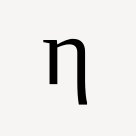deleted by creator
You forgot the most important part!
print(chr(3486)) # ඞWhy is that thing scary?
It could be an impostor
It looks like the characters from the game Among Us.
It could be a monster.
Looks like telugu
What kind of dumb language is this?
deleted by creator
Python, but this is actually defined and documented behavior.
Edit: to illustrate what I mean:
not() # Truethis actually is
not ()(the lack of space makes it look like a function),()is a tuple, in python an empty collection returnsFalse, this is to make checks simpler. You can type:if my_list: do somethinginstead of
if len(my_list) > 0: do somethingnotnegates it so you getTruestr(not()) # 'True'converts resulting
booltype into a string representationmin(str(not())) # 'T'This might feel odd, but that’s also documented.
min()not only allows to compare two numbers like it is in most languages, but you can also provide a sequence of values and it will return the smallest one.String is a sequence of letters.
Letters are comparable according to ASCII (so you can do sorting). In ASCII table capital letters are first, so the ‘T’ is the smallest value.
ord(min(str(not()))) # 84this just converts ‘T’ to Unicode value which is 84
range(ord(min(str(not())))) # range(0, 84)This creates a sequence of numbers from 0 to 83
sum(range(ord(min(str(not()))))) # 3486This works like
min()except adds up all the numbers in the sequence together, so in our case 0+1+2+3+…+83 = 3486chr(sum(range(ord(min(str(not())))))) # 'ඞ'reverse of
ord(), converts Unicode value to a character.
Why does not without a parameter return True? I’m starting to like the fact that I haven’t touched python in a while.
deleted by creator
Are you sure?
I can’t test it now, but to me it looks like
()is an empty tuple. Python behavior is that for logic operations empty set equals to false. Then we applynotto getTrue. Not having space betweennotoperator and parentheses makes it look like it is a function.deleted by creator
God I love python
Why is literally nothing equivalent to None? Is it because None is the default value of an optional parameter? (If so why oh why is it optional)
Because nothing isn’t something, and something is true. It’s base Boolean logic where everything is either true or false. Null/nothing is false.
It’s a weird way to think about conditionals, but it makes sense when you use them in real examples. In my case, I use them like this when I need to make sure that a variable has a value. So I can do something like
If(variable){do things with the variable}else{do stuff when the variable doesn’t exist}
I understand that, it makes sense. But why does it not throw an error? The parameter is missing after all.
Actually the explanation is wrong.
not()is actually
not ()notis a keyword not a function.Boolean of empty tuple is
Falseand thennotnegates it.I explained it better here:
That makes a lot more sense, thanks I did see in the syntax highlighting that it was a keyword but forgot that none of them took parameters.
No it’s not, “” (a null/empty string) is the parameter. Not every function needs a parameter to be valid, and negation is one of them. Negating nothing is something, so “not()” = “not(null)” = “not(false)” = “true”
in J, many other languages, not null is null.
a = null if not a: …if not a were null then an if that evaluates that would evaluate it as falsy… also if a would evaluate as falsy :/ that’s far weirder behaviour
Removed by mod
𓂺

GETOUTOFMYHEAD GETOUTOFMYHEAD GETOUTOFMYHEAD
giggity
nice
thanks I won’t do that 'cause it’s sus
>>> print(print(chr(sum(range(ord(min(str(not())))))))) ඞ NoneRemoved by mod
Is it bad that I already knew what this would print the moment I read the meme?
You can’t tell me what to do










